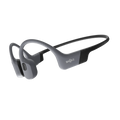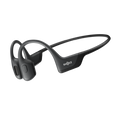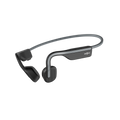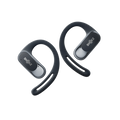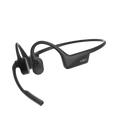AFTERSHOKZ: What did it feel like being a part of Team USA?
LACEY HENDERSON: I made my first National Championship team in 2013 which felt the most special. It felt like a real accomplishment, not just for me, but for my family, as my dad went to the Olympic trials but never made a team. It felt like I completed a sentence for all of us. Rio was a continuation of all my hard work, but in the Paralympic/Olympic years the teams are much harder to make and that was where it felt like I could really put my money where my mouth was and solidified my place in the world as an elite athlete.
AS: Before becoming a Paralympian, you were a Division I cheerleader. What skills or lessons did you learn from cheer that you’ve carried into your professional career?
LH: Honestly, cheerleading has taught me a lot about life. In that sport, you have to be ready to perform under the craziest circumstances. For better or worse, you learn to smile and find ways to work around people you find disagreeable to reach solutions. Cheer taught me to enter any situation with unbridled, and sometimes unwarranted, confidence knowing that no matter what I had all the tools necessary to figure out new things. For me, most importantly, I learned how to have fun while working really hard toward a goal.
AS: With the postponement of the 2020 Summer Paralympic Games, how are you using this extra year to prepare for the 2021 games?
LH: I decided to continue my education and am pursuing my MBA! We also bought a house, which has been a crazy process during a pandemic. I really took this year to kind of step back and consider the adult that I wanted to be outside of my sport. When the lights turn off at the stadium and everyone goes home, I really wanted to create some kind of stable environment after living for years of constant moving for training. Of course, I am still an athlete so I also spent my time getting my prosthetic equipment dialed in for training and competing, so whenever we are allowed back on the track to compete I am ready!
AS: Paralympic athletes oftentimes don’t get the same recognition as non-disabled athletes on the world stage. In your opinion, how do you think the Paralympic Games is helping to introduce more inclusion and representation in sports?
LH: The Paralympic Games is so cool because it is both a celebration of sport AND social justice. Slowly but surely I see a lot of mainstream thoughts change on disability and a huge driver of that has been from sports and incredible disabled athletes. There is still a really long way to go, but the narrative from pity or inspiration is slowly changing to a more even marketing level. Bill Bowerman says it best with “if you have a body, you are an athlete” and I think culturally we are at a time now where the collective mindset can appreciate and understand that.
AS: What would your biggest piece of advice be for someone who dreams about competing in the Paralympics one day?
LH: My biggest piece of advice, I guess for anyone but especially for someone who has aspirations towards being a Paralympian or Olympian, is to remember the everyday little efforts count, but progress isn’t always linear. Sport, like life, has ebbs and flows, and just maintaining consistent and good work over a long period of time really does help you in the end.
AS: What is the biggest obstacle/hurdle you’ve encountered in your training, and how have you overcome it?
LH: The biggest obstacle for me, and for a lot of track athletes in the US, is resources like access to adequate facilities. Once an athlete is past the collegiate level, or if they never were in that arena due to disability or life or whatever, getting to decent training conditions for niche events like the long jump can be really hard. Finding a track with a decent long jump pit is hard, but there are compounded obstacles within the facility itself. We don’t generally have a great training environment in the US for recreational track and field outside of the schooling system. There are also a lot more security measures I have dealt with while training on tracks like school shootings and safety regarding COVID-19. There are a lot of great resources for acquiring adaptive sports equipment, but my biggest hurdle has been having a consistent environment that promotes success.
Learn more about Lacey Henderson here.

